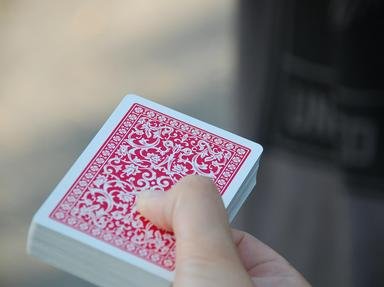Quiz Answer Key and Fun Facts
1. Firstly, an apology for the lack of suit symbols, but it seems that the FT system cannot handle them. All hands in this quiz are therefore laid out in the format: spades // hearts // diamonds // clubs.
Stayman is one of the world's most commonly-played conventions. If partner opens 1NT (15-17), on which of these hands should you respond with a Stayman Two Clubs?
2. You have agreed to play Weak Two bids in three suits. Which of these hands is most suitable for an opening bid of Two Hearts?
3. A strong and artificial Two Club opening is part of just about every natural-based system these days. On which of these hands should you open Two Clubs?
4. Blackwood is one of the most commonly-used conventions, but it is probably also the most misused. You open One Spade and your partner raises to Three Spades. On which of these hands should Blackwood 4NT be your next bid?
5. Most pairs play transfers over 1NT openings these days. You open 1NT (15-17) and partner bids Two Hearts, a transfer to spades. He then continues with 2NT after your Two Spade response.
What do you now bid with K Q 2 // A 3 // K J 7 5 // Q 10 7 4?
6. You have agreed with your partner to play the Jacoby 2NT response to a major suit opening, showing at least 4-card support for his major and the values for game or more. On which of these hands should you respond 2NT to a One Spade opening bid?
7. Your have agreed to play double jump-shift responses to a major-suit opening as splinter bids, showing shortage in the suit bid and support for partner. On which of these hands should you respond with a Four Diamond splinter after partner has opened One Heart?
8. An 'Unassuming Cue-Bid" or a "Cue-Bid Raise" can be used for numerous reasons. Left-Hand Opponent opens One Diamond, partner overcalls One Spade and RHO passes. Which of these hands is NOT suitable for a Two Diamond cue-bid?
9. Fourth Suit Forcing is a tricky tool for novice players to understand, but it is a weapon that it is hard to do without. Partner opens One Heart, you respond One Spade and partner rebids Two Clubs. On which of these hands would a fourth-suit forcing Two Diamonds NOT now be correct?
10. We finish with an opening lead problem: 5 // 9 7 6 5 3 2 // J 3 // J 8 6 2.
You hear the bidding go:
1D - Pass - 1H - 1S
3D - Pass - 4NT - Pass
5D - Pass - 6D - Dble
All Pass
What do you lead?
Source: Author
EnglishJedi
This quiz was reviewed by FunTrivia editor
WesleyCrusher before going online.
Any errors found in FunTrivia content are routinely corrected through our feedback system.

